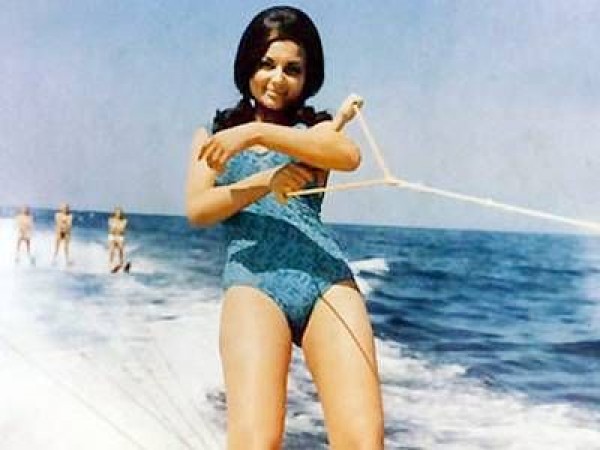
The development of Indian cinema has been characterised by moments that broke new ground in societal norms and perceptions. One such historic event took place in the late 1960s when the legendary actress Sharmila Tagore broke stereotypes by becoming the first Indian actress to appear onscreen in a bikini in the movie "An Evening in Paris" (1967). This bold move not only generated debate but also irreparably altered Indian cinema and cultural attitudes. She then showed even more audacity by gracing the cover of Filmfare magazine in 1968 while still wearing a bikini, solidifying her reputation as a trailblazer and female empowerment symbol.
In Sharmila Tagore's career, the film "An Evening in Paris," directed by Shakti Samanta, was a turning point. She was able to show off both her acting talent and her fearless spirit in that movie. The movie, which had Paris as its setting, effectively conveyed how societies both in India and abroad were changing. Sharmila's appearance in a bikini was a sharp break from the norm at a time when Indian cinema tended to favour conservative portrayals of women.
The daring decision by Sharmila Tagore to wear a bikini in "An Evening in Paris" was more than just a fashion statement; it was a potent representation of freedom and self-expression. Her portrayal questioned conventional ideas of modesty and womanhood, igniting discussions about societal taboos and the changing position of women in Indian society. Even though her brief appearance in a bikini had a big impact. It marked a turning point away from the suffocating conservatism that had dominated Indian cinema for years.
The cinematic landscape underwent a significant change as a result of Sharmila Tagore's bikini appearance. It demonstrated the industry's readiness to accept novel narratives and try out risky themes. Her character in "An Evening in Paris" had a self-assured demeanour and a contemporary outlook that spoke to the shifting aspirations and dreams of a generation looking to escape social constraints.
The bikini scene starring Sharmila had a significant cultural impact. It challenged societal norms, sparked discussions about how women are portrayed in films, and signalled the beginning of a more progressive era in Indian cinema. Her portrayal served as an example for women who wished to unreservedly embrace their uniqueness and pursue their dreams.
The pioneering spirit of Sharmila Tagore extended beyond the screen. She garnered media attention once more in 1968 when she appeared in a bikini on the cover of Filmfare. The iconic cover image not only reflected her audacity but also sparked debates on body positivity, female empowerment, and women's rights. Sharmila Tagore established herself as a role model for empowerment for future generations by resolutely embracing her unique identity and defying social expectations.
In the history of Indian cinema, Sharmila Tagore's "bikini revolution" stands out as a pivotal event that broke down barriers and paved the way for a more open-minded and forward-thinking industry. She showed her dedication to authenticity, individuality, and the ability of art to affect social change by being willing to cross barriers. Her influence has encouraged later generations of actresses to assert their individuality and question social norms, which has resulted in a more inclusive and varied portrayal of women in films.
Sharmila Tagore played a crucial part in influencing the development of Indian cinema and cultural attitudes, as evidenced by her iconic bikini scene in "An Evening in Paris" and her daring Filmfare magazine cover. These situations involved more than just clothing choices; they made strong statements that challenged norms, uplifted women, and paved the way for a more liberated and forward-thinking period in Indian cinema. Sharmila Tagore's legacy endures as a testament to bravery, female emancipation, and the lasting effects of shattering social norms in the name of artistic expression and social change.
Katrina Kaif's Barbie: A Cultural Icon in 'I Can Be' Series
The Net to the Set: Aamir Khan's Journey from Tennis Courts to Cinema
Cinematic Whispers: Karan Johar and Farah Khan's Subtle Appearance in 'Kal Ho Naa Ho'